First Visit to a Dentist: What to expect for your appointment
Dr. craig parlet.
- November 3, 2021
Home » First Visit to a Dentist: What to expect for your appointment

First Visit to a Dentist: What to Expect
I would like to share my ideas on what a first visit to the dentist should be like for the patient. With my 30 plus years of experience as a private practice general dentist to shape my views. I am continually striving to improve my abilities and methods, but I feel I have a good grasp of this procedure.
Personally I don’t believe in scheduling a new patient examination with the hygienists and the Dr. appears for 5-10 minutes to do his evaluation. Rarely is this adequate time to perform a thorough evaluation of the patient’s oral health.

How Long is the First Visit to a Dentist?
I believe most new patients value the amount of time I allow for a new comprehensive patient evaluation, approximately 1 hour. We often receive compliments on how thorough the examination was. I enjoy getting to know the patients and hearing about their jobs, stresses, kids, hobbies, etc. I try to slowly build a relationship with my patients to get to know them and their priorities.
Part of the fun of being a healthcare provider is discovering we all have things in common. We are all just human. We often share happy stories and sad stories. Most of the time we can express something that will make us all laugh and maybe reduce the patient’s anxiety a little.
A First Class First Visit Examination
I think every new patient deserves a first class examination. The process begins with the initial phone call and relies on the skills of my front desk person to gather all the data necessary for my office to be prepared for a new patient visit. A variety of paperwork and forms must be filled out including insurance information, dental history information, medical history, and various consent forms.
Some things can be delegated to staff members, but my time commitment for the initial examination is usually about 1 hour for an adult. This is a different experience for many patients and must be explained to them prior to the appointment. The quick 5-10 minute exam just doesn’t fit my style.
More than Just a Visit to the Dentist
My initial meeting with the patient includes an introduction to the patient by my assistant. Before sitting a patient back in the dental chair I like to review their personal information, medical history, dental history and any areas of concern. I also like to know what their job entails, family details like parents, kids, grandkids and if they are native Coloradoans or have relocated from elsewhere.
I also like to ask what their special interests are, which is fascinating to hear. Many patients like to hear about my family, hobbies, and activities and I am happy to share info with them. Being a cancer survivor also lets them know I can empathize with them on many levels.
Looking for Top-Rated Dentists?
Expect to have x-rays taken.
After this fairly brief conversation I like to focus on why they are here and begin my examination with a very brief look in their mouth before I request any radiographs(x-rays). The patient is still in the chair and upright. The x-rays are taken and thanks to the nearly instant digital x-rays I can then review the x-rays with the patient and point out good things and potential problem areas. Patients usually like to see the x-rays and ask a variety of questions. After questions are answered we can sit the patient back and begin the evaluation.
An Oral Health Screen
My oral examination consists of documenting many things present including:
- Orthodontic jaw relationships,
- Excessive spacing
- Excessive wearing of enamel or dentin
We will also take jaw movement measurements and palpate the temporomandibular joint (TMJ) and do a screening for temporomandibular dysfunction by checking for joint sounds, erratic movements, lack of mobility, and a muscle palpation. This evaluation also incorporates an extra oral cancer screening, checking for growths or lymph node involvement. It is surprising to me how many patients have not had this done before, or not had it explained.
First Dental Visit Examination Steps
I can now move to the mouth itself. I’ll continue the cancer screening intra orally including gum tissue, cheeks, lips, tongue, palate, tonsil area, and under the tongue.
I once detected enlarged submandibular lymph nodes on a patient and made her an appointment with a specialist. The diagnosis was lymphoma cancer. They had to move away, but her husband called several years later to thank me as the oncologist told him to. She had made a complete recovery- possibly my most rewarding day in dentistry ever!
Next I will examine the periodontal tissue- gum tissue. This generally requires probing the teeth to check for periodontal health. We also check gingival recession, mobility, amount of ginigva remaining, etc. Some patients require more time than others for this evaluation, but healthy gum tissue is the foundation point for a healthy mouth.
Now, I can finally move to checking the teeth. This process includes charting existing restorations, decayed areas, broken teeth, cracked teeth, potential root canal problems, missing teeth, etc. Depending on the extent of existing work or teeth needing treatment, this will take a few minutes.
The last part of the exam is using a small intra oral-extra oral camera to take as many pictures as necessary. These pictures help document conditions and be able to show and explain possible treatment options to the patient. The majority of patients like to see “their” teeth in pictures and usually have great questions when they are initiated by viewing their pictures. I am happy to answer their questions while viewing pictures.
A Final Assessment
At this point, I now have somewhat of an idea of my patient’s oral conditions. I will review the pictures-one-on one and then move on to treatment. If the patient needs a routine cleaning and a filling or two I will present that at this time. If there are more advanced issues, such as endodontic, periodontic, or restorative issues then I will have the patient reappoint for a consultation appointment as it may take me an hour or more to evaluate pictures, x-rays, and clinical notes to be able to formulate a treatment plan.
Overall, your first visit to a dentist should be about you! You are trusting them with your oral health and expecting them to make the best decision. You want a dentist that will take the time to understand your medical history. Someone that will put your needs first and want to build a long lasting relationship.

Dr. Craig Parlet is a recently retired private practitioner after practicing dentistry for over 3 decades. He attended Creighton University in Omaha, Nebraska and received a Doctorate of Dental Surgery in 1983. Dr. Parlett was a member of two different study clubs, RAZA Study club and S.T.A.T study club. Both clubs dealt with overall accountability and critiquing dental work.

Written by: Dr. Craig Parlet
General Dentist

Curator: The DentalScout Team
25+ years of dental experience
Share This Post
You may also enjoy these articles.
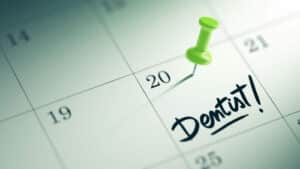
How Often Should You Go to the Dentist?
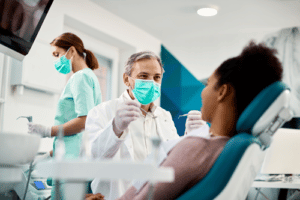
How to Find a Good Dentist?
Looking for a dentist.
Find The Best Dentist In Your Area In Seconds!

Your Guide to Better Oral Health
About Us Knowledge Base Sitemap
For Dentists
Patient Acquisition
Dentists in Aurora, CO Dentists in Castle Rock, CO Dentists in Colorado Springs, CO Dentists in Denver, CO Dentists in Monument, CO Dentists in Pueblo, CO
©DentalScout / Privacy Policy / Terms of Use
- Boston - Newbury St
- Boston - Tremont St
- Jamaica Plain
- South Boston
- West Roxbury
- Concord Hospital
- Concord - South Main St
- East Longmeadow
- Manchester, NH
- Manchester Elm St
- Manchester South Willow
- Nashua - Main St
- South Nashua
- New Bedford
- North Andover
- Rochester, NH
- Worcester at the Trolley Yard
- Worcester - Shrewsbury St
- Crowns & Bridges
- Dental Fillings
- Emergency Dental Care
- Gum Treatments
- Extractions
- Wisdom Teeth
- Partial & Full Dentures
- Digital X-rays
- Oral Cancer Screening
- Diabetes and Oral Health
- Pediatric Dentistry
- Root Canals
- Sedation Dentistry
- Sleep Dentistry
- TMD/TMJ Treatment
- Payment & Insurance
- Pay My Bill
- New Patient Offer
- Consultations
- Braces Offer
- What to Expect at Your First Visit
- Before & After
- Dental Definitions
- Health & Safety
- Awards & Recognition
- Meet Our Dentists
- Doctors Careers
- Affiliate Your Practice
- Dental Services
- Payment Options
- Patient Resources
- Fulltext search
- Book an Appointment

What To Expect At Your First Dental Appointment
Creating healthy, confident smiles for life is our mission and we are glad you have taken the first step. Regular dental appointments are an important part of maintaining your overall health and wellbeing.
Here’s what to expect at your dental first visit
- When you arrive, you will be greeted by a Patient Coordinator who will check you in, notify the team of your arrival, verify insurance if applicable, and guide you through any necessary new patient paperwork. You can save time by completing the new patient forms in your appointment confirmation email before you arrive. A link to the new patient forms is also available on the location page for the office you are visiting.
- Once completed, a member of our team will escort you from the waiting room to a treatment room where they will review your dental history, medical history, and any dental health concerns or issues. The dental assistant will then take digital x-rays for the doctor to review. Radiation from digital dental x-rays is very low , especially in comparison to traditional x-rays. For more information, speak with your dentist or dental assistant.
Your Comprehensive Exam
- As a new patient, you will first see the dentist for a comprehensive exam. During this exam the dentist will discuss your health history, any concerns you may have, and may take your blood pressure to ensure you are in good health. This is a great time to let us know if you are anxious about your appointment. Your comfort is a priority and we will work to make your appointment as smooth and comfortable as possible. During your exam, your dentist will review your dental x-rays and complete an oral cancer screening which includes an examination of your jaw, neck, tongue and inside of your mouth. This screening is important and recommended one per year.
- This initial exam will take about an hour and is important so your dental team can identify any issues like gum disease or cavities. Based on your exam, your dentist will develop a personalized treatment plan and discuss options with you. If dental care is needed with a specialist, all Gentle Dental practices have dental specialists on staff without the need for a referral.
- At your first visit, you may not receive a cleaning. A cleaning may be completed after the doctor ensures it is the appropriate treatment for your specific oral health. There are certain conditions that determine if a cleaning is not the first best course of treatment. Once your oral health is stabilized, you can expect to have your exam and cleaning/hygiene appointments at the same time going forward.
Your Hygiene Visit
- During your visit, dental hygienist will discuss your dental history and answer any questions you may have regarding oral hygiene habits, signs of gum disease, or brushing and flossing techniques. You can discuss any concerns, sensitivity, or issues you are experiencing at this time.
- An overview of your mouth and gums will be followed by an oral cancer screening, then a thorough cleaning and polishing of your teeth. Your hygienist may clean your teeth manually with traditional tools or use an advanced water powered instrument based on what is best for your specific needs. Fluoride treatments are recommended by the ADA for adults as well as children, and your dental hygienist may recommend treatment.
- Finally, your hygienists will review tips for caring for your teeth and preventing gum disease. Your hygiene exam should take about 45 minutes, and you will leave with a toothbrush, floss and toothpaste to keep on track with your home health routine.
What’s next?
- Once you review your treatment plan with the dentist, a patient coordinator will meet with you to schedule any follow-up appointments, review payment options, and answer questions about insurance coverage of your recommended services.
- For each service you will receive a comprehensive breakdown of cost and insurance coverage. Financing options such as CareCredit are available and all Gentle Dental locations accept Essential Dental, a discount dental plan that provides immediate coverage and discounts on all dental services. We can assist you in applying in the office. Our goal is to help you get the treatment you need quickly and comfortably.
- Don’t forget to schedule your next hygiene appointment and exam before you leave. It’s a great way to make sure you stay on track with your dental health. When you provide us a cell phone and email address, you will receive text and email reminders of your upcoming appointments.
At Gentle Dental, we’re on a mission to provide healthy, confident smiles for life. If at any point you have questions about your experience, please email [email protected]
Latest Resources

How To Choose Teeth Whitening Products [Expert Tips]
Teeth whitening has more than just an esthetic benefit. Teeth whitening can…

How Much Does Professional Teeth Whitening Cost?
One of the most common things people want to change about their smile is the…

What is a Dental Emergency? [Types and Tips]
A dental emergency can catch you by surprise, especially if you’re not prepared…

ORAL HEALTH & DENTISTRY
First Visit to Dentist: What to Expect
Written By : Generations of Smiles Writers
Reviewed By : Charles Rodgers, DDS
Published: Jul 25, 2023
Updated: Jul 25, 2023
What to Expect from a First Visit to a New Dentist?
- How do I check in?
- What typically happens during a dental exam?
- How long do dentist appointments take at this particular office?
Checking In and Completing Paperwork
Good news, modern dental offices are providing more convenient ways to check in for appointments. At Smile Generation-trusted offices, you can experience a seamless e-check-in through the Smile Generation MyChart . This platform allows you to effortlessly manage and track your health information through a secured patient portal. The best part? You can book and check into your appointment even before setting foot into the dentist's office.
After you are checked in, your new dentist will greet you and ask if you are experiencing any sensitivity or pain with your teeth or gums. After this discussion, your dentist will prescribe the necessary X-rays and introduce you to the dental assistant, who will do your X-rays.
X-rays and Other Diagnostic Tests
Your new dentist will want to look at recent X-rays of your teeth. If you haven’t had X-rays taken of your mouth in the last year or two, an experienced and thorough dental assistants will take a set of full-mouth x-rays. Your new dentist will want to get a good idea of any possible cavities and other dental conditions that could be in between your teeth or in hard-to-see places in your mouth.

A Comprehensive Dental Exam
Dental health history and concerns, development of a personalized dental care plan.
If you have any concerns regarding financing your dental work , there are many programs available that may help you to afford the dentistry you require.

After you have discussed your treatment options with your dentist, one of our knowledgeable healthcare coordinators will assist you with maximizing your insurance benefits to minimize your out-of-pocket costs. As a Smile Generation-trusted office, we pride ourselves in our ability to help ensure that the dental treatment you want and need fits within your budget and lifestyle.
Common Dental Procedures on Your First Dentist Appointment
Dental cleaning.
After the exam, your dentist will likely recommend a dental cleaning . If your teeth need more attention due to poor oral hygiene with tooth decay or gum disease , your new dentist may want to schedule a deep cleaning that could take more than one appointment to complete.
- Silver amalgam
- Composite resin
Questions to Ask Your New Dentist
How often do i need to come for check-ups, what's the best time for a dentist appointment.
Dental offices get swamped with patients in mid to late summer and at the end and beginning of the year . During these busy periods, it can be difficult to book an appointment. Reasons for these spikes in dental appointments include:
- Families often try to get dental appointments booked before school starts in mid-August.
- Patients who want to use the remaining insurance benefits make dental appointments in December.
- As the new year rolls in, January and February get quickly booked with patients wanting to use new insurance benefits.
How Do I Prepare Myself for a Dentist Appointment?
- Insurance information
- Medical records
- Dental records
Any oral appliances you may use, like a mouth guard , sleep apnea mouthpiece, or retainer .

Will a Dentist Fill a Cavity on the First Visit?
Finding a new dentist.
If you are looking for a new dentist in your community, use Smile Generation's Find a Dentist tool to find the perfect local dentist for you and your family.
Find your trusted, local dentist today!
- Sales seasonality in dentistry." ADA, 12 July 2016, https://newdentistblog.ada.org/sales-seasonality-in-dentistry/
Smile Generation blog articles are reviewed by a licensed dental professional before publishing. However, we present this information for educational purposes only with the intent to promote readers’ understanding of oral health and oral healthcare treatment options and technology. We do not intend for our blog content to substitute for professional dental care and clinical advice, diagnosis, or treatment planning provided by a licensed dental professional. Smile Generation always recommends seeking the advice of a dentist, physician, or other licensed healthcare professional for a dental or medical condition or treatment.
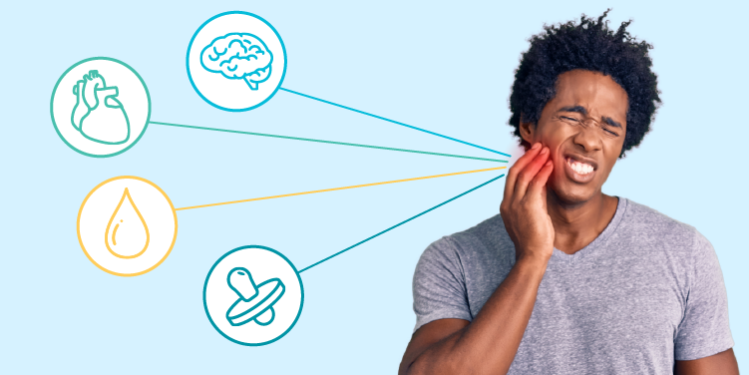
When is a toothache more than a toothache?
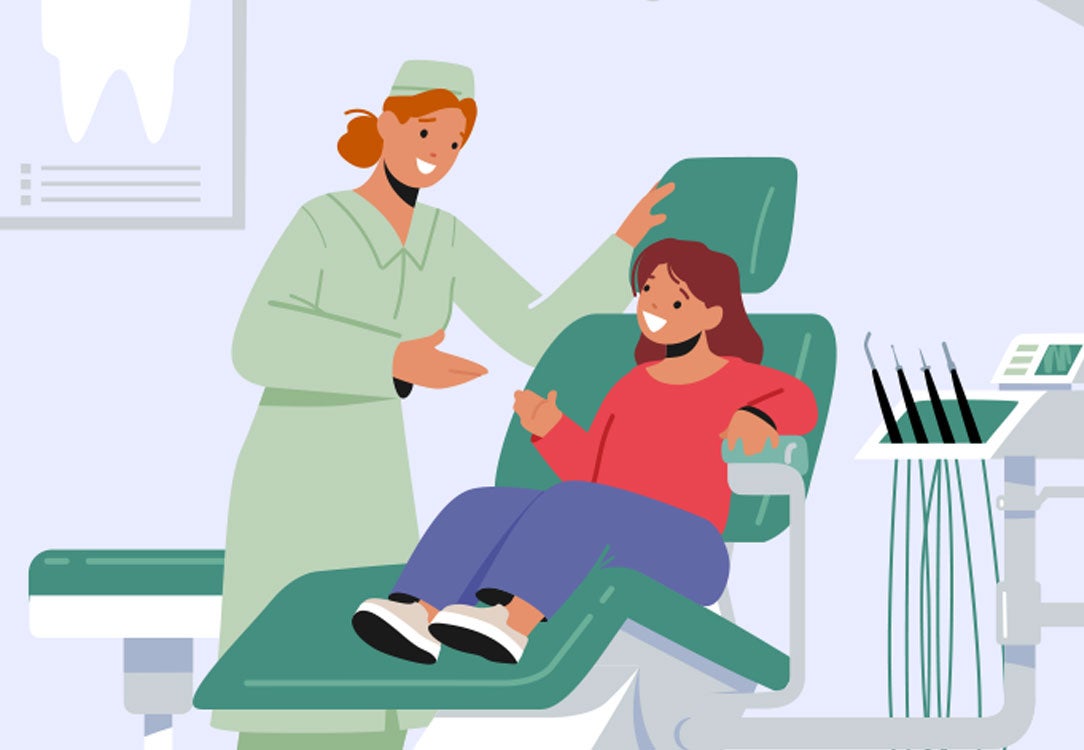
Reasons to See a Pediatric Dentist
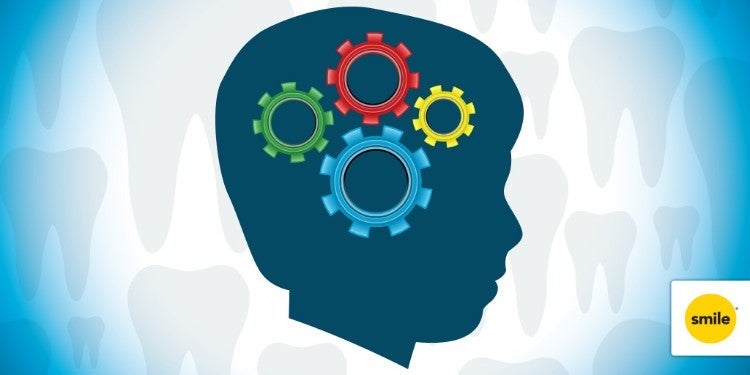
Does Your Special Needs Child with Autism Need a Pediatric Dentist?
Join our mailing list.
Our Smile Generation newsletter features lifestyle tips, recipes, promotions and pointers on how oral health can put you on the path to better overall health.
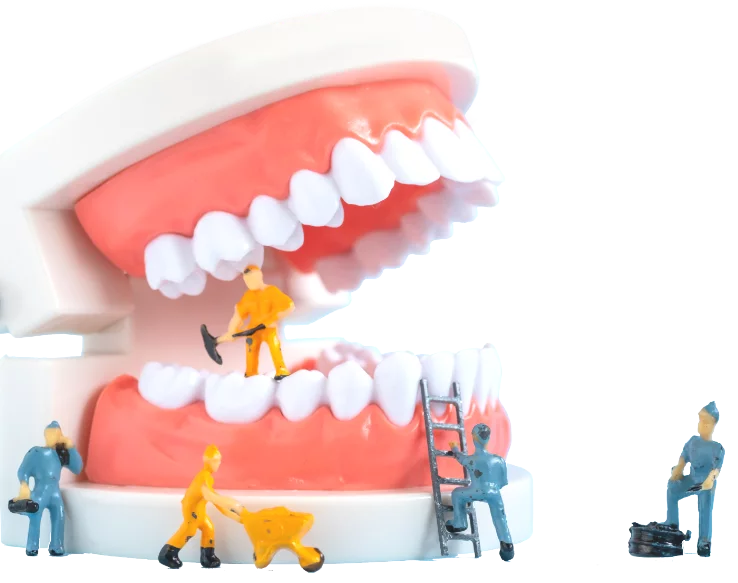
Skip Navigation
Oral Health

Whitening Products
Whitening Solutions
- All Optic White® products
- Pro Series Toothpaste
- ComfortFit LED Device
- Overnight Teeth Whitening Pen
- Express Teeth Whitening Pen
- Renewal Toothpaste
- Advanced Toothpaste
- Stain Fighter® Toothpaste
- Charcoal Toothpaste
- Whitening Mouthwash
- Adult Orthodontics (Braces)
- Bad Breath (Halitosis)
- Bridges & Crowns
- Brushing & Flossing
- Cleft Lip /Palate
- Cracked Tooth Syndrome
- Dental Emergencies & Sports Safety
- Dental Health Threats
- Dental Product Guidance
- Dental Sealants
- Dental Visits
- Developmental Conditions
- Diabetes & Endocrine Disorders
- Digestive (Gastrointestinal) Disorders
- Early Orthodontics (Braces)
- Gum Disease (Gingivitis)
- Heart Disease
- HIV/AIDS & STDS
- Immune Disorders
- Jaw Pain (TMD)
- Mouth & Teeth Anatomy
- Mouth Sores & Infections
- Nutrition & Oral Health
- Oral Cancers
- Oral Care: Babies (0-4)
- Oral Care: Kids (5-12)
- Oral Care: Teens (13-17)
- Oral Care: Adults (18+)
- Oral Care: Adults (55+)
- Pain Management (Anesthesia)
- Plaque & Tartar
- Pregnancy Oral Care
- Respiratory Conditions
- Root Canals
- Special Occasions
- Teeth Bonding
- Teeth Grinding (Bruxism)
- Teeth Whitening
- Tooth Extraction
- Tooth Fairy
- Tooth Sensitivity
- Wisdom Teeth
- View All Article Categories >
- Toothpastes
- Toothbrushes
- Mouthwashes & Rinses
- Prescription Products
- Specialty Products
- Teeth Whitening Products
- Colgate ® Total
- Colgate ® 360º
- Colgate ® MaxFresh ®
- Colgate ® with Charcoal
- Colgate ® Enamel Health ™
- Colgate ® Optic White ®
- Colgate ® Kids
- Colgate ® Sensitive
- Colgate ® Keep
- Colgate ® Renewal
- Colgate ® Hum
- View all products >
- Our Mission
- About our Mission
- Smile First
- Accessible Oral Care
- Innovation Champions
- Bright Smiles, Bright Futures
- About the Program
- Art Contest
- Classroom Kit & Samples
- Material and Resources
- Mobile Dental Vans
- Sustainability
- About Sustainability
- Recyclable Tube
- Sustainable Products
- Sustainable Habits
- Haz La U Grants
.png)
Dental Visits – The Dentist Visit And What To Expect
Top articles, more articles.
Medically Reviewed By Colgate Global Scientific Communications
What Happens During a Dental Visit?
First, it is important to find a dentist with whom you feel comfortable. Once you've found a dentist you like, your next step is to schedule a check-up — before any problems arise.
On your first visit to a dentist, they will take a full health history. On subsequent visits, if your health status has changed, make sure to tell them.
Most dental visits are checkups. Regular checkups (ideally every six months) will help your teeth stay cleaner, last longer and can prevent painful problems from developing.
- A thorough cleaning Checkups almost always include a complete cleaning, either from your dentist or a dental hygienist. Using special instruments, a dental hygienist will scrape below the gumline, removing built-up plaque and tartar that can cause gum disease, cavities, bad breath and other problems. Your dentist or hygienist may also polish and floss your teeth.
- A full examination Your dentist will perform a thorough examination of your teeth, gums and mouth, looking for signs of disease or other problems. His or her goal is to help maintain your good oral health and to prevent problems from becoming serious, by identifying and treating them as soon as possible.
- X-rays Depending on your age, risks of disease and symptoms, your dentist may recommend X-rays. X-rays can diagnose problems otherwise unnoticed, such as damage to jawbones, impacted teeth, abscesses, cysts or tumors, and decay between the teeth. A modern dental office uses machines that emit virtually no radiation — no more than you would receive from a day in the sun or a weekend watching TV. As a precaution, you should always wear a lead apron when having an X-ray. And, if you are pregnant, inform your dentist, as X-rays should only be taken in emergency situations. Your dentist may ask for a Panoramic X-ray, or Panorex. This type of film provides a complete view of your upper and lower jaw in a single picture, and helps the dentist understand your bite and the relationship between the different teeth and your arch.
How Long Should I go Between Visits?
If your teeth and gums are in good shape, you probably won't need to return for three to six months. If further treatment is required — say to fill a cavity, remove a wisdom tooth, or repair a broken crown — you should make an appointment before leaving the office. And don't forget to ask your dentist any questions you may have —this is your chance to get the answers you need.
Oral Care Center articles are reviewed by an oral health medical professional. This information is for educational purposes only. This content is not intended to be a substitute for professional medical advice, diagnosis or treatment. Always seek the advice of your dentist, physician or other qualified healthcare provider.

Want more tips and offers sent directly to your inbox?
Sign up now
Recommended Products

Thank you for submitting your feedback!
If you’d like a response, Contact Us .

You also might like

Sign up now ">
Social Impact
Where to Buy
United States (US English)
ColgateProfessional.com
Shop.Colgate.com
Submit an Idea

© YYYY Colgate-Palmolive Company. All rights reserved.
Terms Of Use
Privacy Policy
All Products
About Our Ads
Children's Privacy Policy
All Articles
Cookie Consent Tool
Do Not Sell My Personal Information
All Educational Resources
- Member Login
The Patient's First Visit
Guidelines for Practice Success | Managing Patients | Patient Intake
The patient’s first visit to your practice sets the tone for the future of the relationship. A positive initial experience translates to a positive, long-term relationship. Remember that the new patient’s first visit should always end with them being given a special welcome packet that includes the basics (toothbrush, toothpaste, floss, etc.) as well as any pamphlets, brochures, and other appropriate informational materials that relate to the patient’s needs. Avoid materials that depict the less attractive side of dental work, e.g., blood.
A warm welcome puts patients at ease and makes them feel like they’re part of your practice family. When you make the best first impression you can, patients will feel comfortable and confident that they’re in the right place for their oral health care.
- Train your receptionist to use the new patient’s name to greet them as soon as they arrive.
- Your front desk staff should welcome each patient with a smile, state his or her name, and ask the patient’s name. Whenever possible, approach new patients before they get to the reception area and shake their hand.
Resources for Managing Patients
- Managing Patients: The Patient Experience, Best Practices [ADA Store]
- Second Opinion
A Child's First Dental Visit Fact Sheet
When should your child first see a dentist? You can take your child at a younger age, but experts recommend taking him or her within 6 months of the first tooth coming in (erupting), or by about 12 months at the latest.
At this time, the dentist can give you information on:
Baby bottle tooth decay
Infant feeding practices
Mouth cleaning
Pacifier habits
Finger-sucking habits
Prepare your child
If possible, schedule morning appointments so young children are alert and fresh.
Prepare a preschooler or older child for the visit by giving him or her a general idea of what to expect. Explain why it is important to go to the dentist. Build excitement and understanding.
Prepare yourself
Discuss your questions and concerns with the dentist. Remember that your feeling toward dental visits can be quite different from your child's. Be honest with your view of the dentist. If you have dental anxieties, be careful not to relate those fears or dislikes to your child. Parents need to give moral support by staying calm while in the dental exam room. Children can pick up parents' anxieties and become anxious themselves.
Prepare the dentist
At the first visit, give the dentist your child's complete health history. For a restoration visit, such as getting a cavity filled, tell the dentist if your child tends to be stubborn, defiant, anxious, or fearful in other situations.
Watch how your child reacts. Many parents are able to guess how their child will respond and should tell the dentist. Certain behaviors may be linked to your child's age:
10 to 24 months. Some securely attached children may get upset when taken from their parents for an exam.
2 to 3 years. A securely attached child may be able to cope with a brief separation from parents. In a 2-year-old, "no" may be a common response.
3 years. Three-year-olds may not be OK being apart from a parent when having a dental procedure such as getting a cavity filled. This is because most 3-year-olds are not socially mature enough to separate from parents.
4 years. Most children should be able to sit in another room from parents for exams and treatment procedures.
The first visit
Your child's first dental visit is to help your child feel comfortable with the dentist. The first dental visit is recommended by 12 months of age, or within 6 months of the first tooth coming in. The first visit often lasts 30 to 45 minutes. Depending on your child's age, the visit may include a full exam of the teeth, jaws, bite, gums, and oral tissues to check growth and development. If needed, your child may also have a gentle cleaning. This includes polishing teeth and removing any plaque, tartar, and stains. The dentist may show you and your child proper home cleaning such as flossing, and advise you on the need for fluoride. Baby teeth fall out, so X-rays aren’t often done. But your child's dentist may recommend X-rays to diagnose decay, depending on your child's age. X-rays are also used to see if the root of a jammed baby tooth may be affecting an adult tooth. In general, it is best that young children not have dental X-rays unless absolutely needed.
The second visit
Just like adults, children should see the dentist every 6 months. Some dentists may schedule visits more often, such as every 3 months. This can build comfort and confidence in the child. More frequent visits can also help keep an eye on a development problem.
Protect your children's teeth at home
Here are some tips to protect your children's teeth:
Before teeth come in, clean gums with a clean, damp cloth.
Start brushing with a small, soft-bristled toothbrush and a very small amount of toothpaste (the size of a grain of rice) when your child's first tooth appears. Use a pea-sized dab of fluoridated toothpaste after 3 years of age. This is when the child is old enough to spit out the toothpaste after brushing.
Prevent baby bottle tooth decay. Don't give children a bottle of milk, juice, or sweetened liquid at bedtime or when put down to nap.
Limit the time your child has a bottle. Your child should empty a bottle in 5 to 6 minutes or less.
Help your child brush his or her own teeth until age 7 or 8. Have the child watch you brush, and follow the same brushing pattern to reduce missed spots.
Limit foods and treats that increase tooth decay. This includes hard or sticky candies, fruit leather, and sweetened drinks and juice. Offer fruit rather than juice. The fiber in fruit tends to scrape the teeth clean. Juice just exposes the teeth to sugar.
- Pediatric Cardiology
- Our Services
- Chiari Malformation Center at Stanford Medicine Children's Health
Related Topics
Dental Care for Infants and Children
Adolescent Problems of the Teeth and Mouth
Connect with us:
Download our App:
- Leadership Team
- Vision, Mission & Values
- The Stanford Advantage
- Government and Community Relations
- Get Involved
- Volunteer Services
- Auxiliaries & Affiliates
© 123 Stanford Medicine Children’s Health

- Facebook icon
- Google icon
- Instagram icon

- My member dashboard
- Edit your profile
- Change your password
- My dentist dashboard

Your child’s first dental visit
A child’s first visit to the dentist is an exciting milestone. But it’s also an important appointment that can help set them on a lifelong path toward good oral health.
The right time to schedule a first visit is within six months of their first tooth coming in, or no later than their first birthday. This timing is crucial because it’s important to:

Learn how to help your child avoid cavities and reduce health risks.
Find out who to call if there is an emergency.
Get to know your child’s dentist.
In the long run, you’ll also save money by learning how to take care of your child’s oral health and reducing the risk of more serious or expensive issues.
Getting your child ready
In advance of the visit, give them an idea of what to expect:
Go over what will happen at the appointment (more on that below). And be sure not to pass on any personal fear you may have of dentists to your child. Give them every opportunity to enjoy their first visit.
Explain why it’s important to go to the dentist and how it keeps them healthy.
Take time to answer any questions they may have.
Try to schedule a morning appointment when your child is likely to be more awake and attentive.
The day of the visit, go over what to expect one more time. Don’t share any negative experiences that you or other family members may have had with the dentist – instead, remain calm and positive! Your child will likely mirror the feelings you express about the appointment.
It can help to bring a comfort item or quiet game so they can have a little fun while they wait. It’s also an option to plan a positive reward for after the appointment.
What will happen during the visit?
During the routine exam, the dentist will check your child for cavities and review overall growth and development. The dentist will also demonstrate how to properly brush and floss your child’s teeth at home to make sure you’re as effective as possible in removing the plaque bacteria from all tooth surfaces.
To help you continue to care for your child’s oral health, you and your dentist will also:
Discuss food, drinks, and habits that can cause cavities and healthy alternatives
Review the vital role fluoride plays in strengthening tooth enamel and protecting your child’s smile
Be given helpful information for preventing accidents as your child grows
Why is it important to practice good oral health care from an early age? Because untreated oral health issues will continue to worsen over time – and more than half of children ages 6 to 8 have had a cavity in at least one baby tooth. 1
By taking your child to the dentist, you’re pointing them toward the path of good oral health. Prepare a little in advance to make sure it’s a great appointment!
1 Centers for Disease Control and Prevention
An official website of the United States government
The .gov means it’s official. Federal government websites often end in .gov or .mil. Before sharing sensitive information, make sure you’re on a federal government site.
The site is secure. The https:// ensures that you are connecting to the official website and that any information you provide is encrypted and transmitted securely.
- Publications
- Account settings
Preview improvements coming to the PMC website in October 2024. Learn More or Try it out now .
- Advanced Search
- Journal List
- J Pharm Bioallied Sci
- v.11(Suppl 2); 2019 May
Age and Reasons for First Dental Visit and Knowledge and Attitude of Parents Toward Dental Procedures for Puducherry Children Aged 0–9 years
Adimoulame sanguida.
Department of Paedodontics and Preventive Dentistry, Indira Gandhi Institute of Dental Sciences, Sri Balaji Vidyapeeth, Pillayarkuppam, Puducherry, India
Venkatachalamoorthi Vinothini
Gajula shivashankarappa prathima, arumugam santhadevy.
1 Department of Oral Pathology and Microbiology, Indira Gandhi Institute of Dental Sciences, Sri Balaji Vidyapeeth, Pillayarkuppam, Puducherry, India
Kulandairaj Premlal
Muthukrishnan kavitha, background:.
The first dental visit provides the dentist an opportunity to advise parents on prevention of oral diseases and also allows for early detection of caries and arrest of its progression. The first dental visit should occur no later than 12 months of age. However, parents fail to give importance to primary dentition as they feel that they are temporary.
The aim of this study was to determine the age of first dental visit and most common reasons for the visit among children aged 0–9 years and to examine the knowledge and attitude of their parents toward treatment procedures for children, taking into account their socioeconomic and educational status.
Materials and Methods:
After obtaining informed consent from parents, sociodemographic data that included age and gender of the child, educational status, occupation of parents, and annual family income were collected. A validated questionnaire was given to the parents.
Statistical Analysis Used:
Descriptive statistics (proportion) was used to report the data. To examine differences in knowledge and attitudes among different socioeconomic and educational groups, chi-square test was used with P value <0.05.
A total of 300 completed questionnaires were analyzed. Age of first dental visit was 6–9 years (57%) and the most common reason for the visit was decayed teeth (33%). The overall attitude of parents toward treatment procedures for children was good in spite of low levels of knowledge about primary teeth and role of the pedodontist.
Conclusions:
It is necessary to promote early dental visits by providing education on perinatal and infant oral healthcare to the healthcare professionals dealing with children. It is also important to promote awareness regarding the maintenance of primary dentition.
I NTRODUCTION
The first dental visit is an important event in a child’s life. It provides the dentist an opportunity to advise parents on prevention of oral diseases and also allows for early detection of dental caries and arrest of its progression. It is recommended that the first dental visit should occur no later than 12 months of age.[ 1 ] In a study among children aged 5–17 years in Vidarbha region of Maharashtra, 85% children never visited a dentist till the age of 17 years.[ 2 ] Parents feel that primary teeth are temporary and hence fail to give importance to care and treatment of deciduous teeth. Other factors that influence early dental care are socioeconomic status, awareness and knowledge about infant oral health among pediatricians and general dentists, insurance coverage, and parent’s attitude toward early dental care.[ 3 ] The more positive a mother’s attitude regarding her child’s oral health, the more dental treatment the child will receive.[ 4 ]
This study was conducted to determine the age of first dental visit and most common reasons for the visit among children aged 0–9 years reporting to the Pediatric Dentistry department of a tertiary-care hospital at Puducherry and to examine the knowledge and attitude of their parents toward treatment procedures for children, taking into account their socioeconomic and educational status.
S UBJECTS AND M ETHODS
A cross-sectional study was conducted among parents of children aged 0–9 years reporting for their first dental visit to the Pediatric Dentistry department of a tertiary-care hospital at Puducherry. The period of data collection was from February to May 2017. The sample size was determined to be 300 using the software Open Source Epidemiologic Statistics for Public Health (version 3.01, updated April 6, 2013) using confidence limits as 5%, hypothesized percentage frequency of outcome factor as 70.3%[ 5 ], and confidence level as 99%. The study included 0- to 9-year-old children visiting the dentist for the first time and their parents who gave written informed consent to participate in the study. Children with special healthcare needs were excluded. The study was approved by the institutional ethical committee of the Indira Gandhi Institute of Dental Sciences (RID2017NRP09PGVVPPD). Sociodemographic details such as child’s age, gender, educational status, occupation of parents, and annual family income were collected. The questionnaire for this study was prepared using questionnaires of previous studies[ 5 , 6 ] and was tested for internal consistency and reliability (Cronbach α = 0.89). The questionnaire included questions on reasons for the visit, person who referred, reason for not taking the child earlier for dental consultations (eight options), eight questions on knowledge about primary teeth and Pediatric Dentistry speciality (options as yes/no), and nine questions on attitudes of parents toward various treatment procedures for children (options as yes/no). The parents were then educated on the importance of primary teeth and also about the various preventive, restorative, endodontic, and orthodontic treatment modalities for children.
S TATISTICAL A NALYSIS
Epi Info software was used for statistical analysis. Descriptive statistics (proportion) was used to report the data. To analyze differences in knowledge and attitudes among different socioeconomic and educational groups, chi-square test was used with P value <0.05 considered as significant.
A total of 300 completed questionnaires were analyzed. Children were categorized into three groups based on age: 0–3 years, 3–6 years, and 6–9 years. Parents were categorized into seven educational groups and five socioeconomic groups [Figures [Figures1 1 and and2]. 2 ]. A greater proportion of children brought for their first visit were in the age group of 6–9 years (57%). Only 3% were in the age group of 0–3 years [ Figure 3 ]. All the parents were educated; 65% were graduates. Most of them were from upper-lower class (39%) and lower-middle class (36%) socioeconomic levels. The most common and least common reasons for first dental visit were decayed teeth (33%) and swelling (1%), respectively [ Figure 4 ]. The most common reason for not having taken the child for early dental visits was that the child did not have any dental problem (55%) [ Figure 5 ]. A high proportion of parents (75%) did not know that 6 months is the right time for first dental visit; 77% knew that milk teeth have to be preserved till they shed; and 58% of parents were aware about Pediatric Dentistry speciality. Nearly half of them knew that a pediatric dentist is trained in treating children with special needs. A poor knowledge was evident regarding the caries-protective role of fluoride: 51% of parents did not know that premature extractions of primary teeth can lead to malocclusion; 54% felt that milk teeth need treatment; and 18% thought that treating milk teeth will cause damage to permanent teeth. Majority of parents were willing for dental radiographs (96%), fluoride application (96%), sealant placement (97%), placement of space maintainers (94%), and early orthodontic treatment (95%). When given the choice of pulp therapy (capping/pulpectomy) or extraction for deep carious teeth, 83% of parents agreed with preserving the tooth with pulp therapy and 79% agreed for treatment under general anesthesia when the child had extensive dental problems and would not cooperate [ Table 1 ]. The data were also analyzed to find if any significant differences in knowledge and attitude existed among different socioeconomic groups and parent educational levels. Statistically significant differences were found for the following questions: Knowledge about existence of separate speciality for children (greater among graduates and upper-middle class), treating milk teeth may cause damage to permanent teeth (28% of upper-lower class felt yes), early removal of milk teeth could lead to malocclusion (59% of graduates replied yes), treating primary teeth will cause damage to permanent teeth (90% of parents with primary school education felt “no,” 27% graduates felt “yes”, 28% parents of upper-lower class felt “yes,”). Among graduates, 74% preferred root canal treatment over extraction of primary teeth [Tables [Tables2 2 and and3 3 ].

Educational status of parent

Socioeconomic status of the family

Age of first dental visit

Common reasons for first dental visit

Common reasons for not bringing the child for early dental visits
Descriptive statistics for knowledge and attitudes of parents towards dental procedures for children
Association between knowledge and attitude and Socioeconomic status of parents
Association between knowledge and attitude and educational levels of parents
D ISCUSSION
Age at first dental visit.
The first dental visit should begin during pregnancy to advise the expectant mother on the importance of dental visit at 6 months of age.[ 7 ] The average ages of first dental visit described in various studies are as follows: >6 years,[ 3 ] 5–12 years,[ 2 ] 5 years,[ 8 ] 3–5 years,[ 9 ] and 14.92 months.[ 10 ] This study revealed that most of the children are brought for their first dental visit between 6 and 9 years. Universally, awareness about the age of first dental visit is low. In Chennai, 59% of parents of children aged 3 months to 10 years reported that the first visit should be only after permanent teeth erupt.[ 11 ] In a study among parents of children aged 1–5 years in Waghodia Taluka, Gujarat, 35% supported that the first dental visit should be by 1 year of age.[ 12 ] In a survey among 1300 parents in Mumbai city, 39% believed that the first dental visit should be at 1 year of age.[ 6 ] In a study among parents of Malaysian children attending a university pediatric dental clinic, 84% disagreed that the first dental visit should be before the child’s first birthday because teeth are not complete (36%), no disease at this age (24%), and child will be uncooperative (24%).[ 13 ]
Reasons for first dental visit
Most common reasons for the first dental visit in the various studies conducted were pain followed by dental caries,[ 14 ] pain followed by regular checkups[ 2 ], and pain and other dental emergencies (trauma and infection).[ 9 ] The results of this study were similar to the previous studies, in that the most common reason was decayed teeth followed by pain. Irrespective of socioeconomic status, majority of parents in a study conducted in Nasik felt that the child should be taken to first visit after complains of tooth pain.[ 15 ] In contrast to the previous studies, majority of Malaysian parents felt that the main reason to see dentist for the first time should be for a checkup.[ 13 ] Similarly, a study among 844 children aged 0–36 months at the University of Sao Paulo showed orientation/prevention as the predominant reason for seeking dental care; the second common reason was caries/treatment followed by dental trauma.[ 10 ]
Reasons for not visiting the dentist earlier
A study conducted in an Indian population found the following potential barriers for parental failure to bring children to dental clinic: lack of knowledge regarding importance of oral health, treatment cost and time, missing school, daily work load, fear of treatment, and multiple visits.[ 16 ] This study enquired the reasons why children were not taken to dentist earlier for which majority reported that their child did not suffer from any dental problem. This could be due to low level of awareness on the process of dental caries and preventive services available to control dental caries. Also, parents feel that the child will not be able to cooperate as he/she is young. This is because of the low awareness regarding the availability of pediatric dentists; 42% of parents in this study were not aware about a separate speciality for children’s dental care. The results are similar to the survey among parents in Mumbai in which 49.6% parents were aware that a pediatric dentist is a specialist trained in child psychology and management.[ 6 ] In this study, 40% of the parents were referred from dental camps and medical hospitals, whereas the remaining 60% came on their own will. A study reported that most parents would take the child first to a pediatrician and very rarely to a pedodontist when the child complains of pain. They expect that the pediatricians would refer them to an appropriate dentist.[ 12 ] In another study, 76% of parents would visit a physician for oral healthcare needs and only 4.7% would visit a pedodontist. The rest would visit either a general dentist (10.4%) or a pediatrician (8.5%).[ 17 ]
Knowledge and attitudes toward treatment procedures for children
Fifty-one percent of parents did not know that premature extractions of primary teeth can lead to malocclusion. The results are similar to the findings among parents of Malaysian children, 49% of whom indicated that early loss of primary teeth may affect eruption of permanent teeth.[ 13 ] Many parents have no knowledge about the variety of treatment options available for primary teeth and they think that such broad range of treatments are available only for permanent teeth of adults.[ 14 ] In this study, 54% of parents felt that milk teeth need treatment. However, it is very reassuring to note that only 18% felt that treating milk teeth will cause damage to permanent teeth. In a study among parents of Kannur suburban, 75% felt that pulp therapy will cause problem in permanent dentition.[ 18 ] In a study among parents of Malaysian children, 37.5% felt extraction to be the best treatment choice for primary teeth with caries.[ 13 ] In a survey among 1300 parents in Mumbai city, 49.8% were aware about the protective role of fluoride and 55.5% were willing for fluoride application and sealant treatment.[ 6 ] In KwaZulu-Natal, South Africa, 32% of parents were hesitant or unwilling to have sealants placed.[ 19 ]
There is also a common belief that cleaning of teeth would loosen them and scratches would appear on teeth. There is also fear of use of sedation and general anesthesia for children as parents feel that the medicines would affect the development of child’s brain, affect their memory, and exacerbate symptoms of existing disease. It is also important to consider the social support from other members of the family when giving consent for treatment procedures to be carried out on primary teeth in children. Many dental professionals inform parents that the child is too young to cooperate and the child needs to wait till he is old enough. All these affect the parents’ beliefs regarding dental treatment for children.[ 20 ] Tickle et al ., in their study conducted among UK parents, found that majority of parents preferred to leave treatment decisions to the dentist, reflecting the imbalance in knowledge existing between parents and healthcare professionals. Parents may not have understanding about health problems and treatment modalities available and their effectiveness. Therefore, it is the responsibility of the dentist to educate the parents about importance of primary teeth and their treatment so as to enable them provide informed consent for the dental care of their children. In the same study, parents whose children had fillings or extractions in the past were more likely to prefer the same treatments if their child had toothache.[ 21 ] This factor of experiential knowledge gained from dental visits of other children in the family could have influenced the attitude component of this study. Surprisingly, in this study majority of parents were willing for most of the dental procedures, reflecting a general good attitude toward treatment procedures for children.
Knowledge and attitudes of parents among various socioeconomic and educational groups
In this study, the overall educational status of parents is good with 85% of them having done high school education and above. Irrespective of the educational status, majority of parents were not aware of the time of first dental visit. Interestingly, most parents knew that milk teeth have to be preserved till they shed and amongst all the educational levels, the primary school education group showed higher knowledge (89.7%).
The proportion of parents who felt that treating milk teeth will cause damage to permanent teeth was more among the higher educational levels and upper-lower socioeconomic status, and this difference was statistically significant. Increased access to inaccurate and misleading information from various Internet sources could be a reason for this observation among the highly educated parents. The awareness about the protective role of fluoride against dental caries is low across the various socioeconomic groups; however, more parents from upper-middle class group were aware about it. A similar pattern was seen for the awareness about the fact that pediatric dentists are trained in treating children with special needs.
L IMITATIONS
The study was conducted among a small sample of rural population of Puducherry.
F UTURE P ERSPECTIVES
Future studies should be conducted among samples representing both rural and urban population of Puducherry. The influence of knowledge and attitude of grandparents on the oral health of children should also be studied. It would also be relevant to know the barriers affecting early dental care. It is also essential to educate the population on the importance of early dental care and study the effects of such intervention on the knowledge and attitude of parents.
C ONCLUSION
There is an urgent need to promote early dental visits and create awareness about the importance of primary dentition. This could be achieved by providing education on perinatal and infant oral healthcare to medical students, obstetricians and gynecologists, pediatricians, family physicians, and nursing personnel whose messages about healthcare are much valued by parents. Pediatric dentists should work in close collaboration with these professionals to prevent children from falling prey to the serious complications of early childhood caries as “every child has a fundamental right to total oral health and every Pedodontist in particular has an obligation to uphold this right.”
Financial support and sponsorship
Conflicts of interest.
There are no conflicts of interest.
R EFERENCES
- U.S. Department of Health & Human Services
- Administration for Children & Families
- Upcoming Events
Brush Up on Oral Health
- Open an Email-sharing interface
- Open to Share on Facebook
- Open to Share on Twitter
- Open to Share on Pinterest
- Open to Share on LinkedIn
Prefill your email content below, and then select your email client to send the message.
Recipient e-mail address:
Send your message using:
Promoting the Age 1 Dental Visit

This Brush Up on Oral Health tip sheet discusses the importance of the age 1 dental visit. It also offers tips to help Head Start staff explain to parents what happens during the dental visit.
Importance of the Dental Visit
Some parents believe that because primary (baby) teeth are going to “fall out anyway” they do not need to take care of them. However, primary teeth are important to a child’s growth and development. The American Academy of Pediatric Dentistry, the American Academy of Pediatrics, and the American Dental Association all recommend that children have their first dental visit by age 1. A state’s Medicaid and Children’s Health Insurance Program (CHIP) dental fees and payment policies must line up with the state’s pediatric dental periodicity schedule. The American Academy of Pediatric Dentistry maintains a webpage with the dental periodicity schedule for each state.
The age 1 dental visit is a foundation for building a lifetime of good oral health. By beginning visits early, children learn that dental visits are usually not associated with pain or fear of the oral health professional. The visit is also an important opportunity to learn if a child is at high risk for developing tooth decay. During the visit, the oral health professional can talk to parents about steps to reduce their child’s risk for decay.
Explaining to Parents What Happens During the Dental Visit

- Describes what they will do during the visit and asks the parents if they have any questions. Parents should be encouraged to ask questions about their child’s oral health and their own oral health.
- Checks the child’s mouth and teeth. Using a small mirror, the oral health professional checks the child’s lips, cheeks, gums, and roof of the mouth for any problems and the teeth for signs of tooth decay.
- Checks the child’s bite and their jaw’s growth. The child’s teeth and jaw will be checked to make sure that they are developing in the right way. The oral health professional may also describe what to expect for the child’s oral development during the next few months.
- Provides preventive care. The oral health professional may provide care to prevent tooth decay. This care may include cleaning the child’s teeth with a toothbrush and applying fluoride varnish. Fluoride varnish is a liquid that is painted onto children’s teeth to prevent tooth decay and to repair early stages of tooth decay. This can be done up to four times a year depending on the child’s risk for developing tooth decay.
- Informs parents about healthy oral hygiene habits. Because home care is a vital part of good oral health, parents may be shown how to brush their child’s teeth and how much fluoride toothpaste to use. The oral health professional may also teach parents how and when to start flossing the child’s teeth. Other topics that may be discussed with parents include the timing of the next dental visit and setting goals to promote their child’s oral health. For example, a goal may be brushing their child’s teeth with fluoride toothpaste twice a day instead of once a day.
- Talks about foods, drinks, and habits that can cause oral problems. The oral health professional may ask questions about feeding practices and the use of sippy cups. Answers to these questions help determine if the child is at high or low risk for developing tooth decay. Parents may also be asked about their child’s thumb sucking, use of pacifiers, and other habits that may cause oral problems.
- Offers tips on how to prevent oral injuries. Injuries to the head, face, and mouth are common in young children, especially when they are learning to walk and climb. The oral health professional may offer tips on how to prevent oral injuries and what to do if an injury occurs.
Even if a child is fearful or cannot cooperate during the dental visit, the visit is still helpful. The child may enjoy riding up and down in the dental chair or seeing how dental tools work, such as the air, water, and suction hoses, and mouth mirror. Often, the oral health professional can get a quick look into the child’s mouth to see if there are any problems.
Download a PDF version to print and share.
Resource Type: Article
National Centers: Health, Behavioral Health, and Safety
Audience: Teachers and Caregivers
Series: Brush Up on Oral Health (BUOH)
Last Updated: April 26, 2023
- Privacy Policy
- Freedom of Information Act
- Accessibility
- Disclaimers
- Vulnerability Disclosure Policy
- Viewers & Players

Health Library
Interactive tools.
- A Child's First Dental Visit Fact Sheet
When should your child first see a dentist? You can take your child at a younger age, but experts recommend taking your child within 6 months of the first tooth coming in (erupting), or by about 12 months at the latest.
At this time, the dentist can give you information on:
Baby bottle tooth decay
Infant feeding practices
Mouth cleaning
Pacifier habits
Finger-sucking habits
Prepare your child
If possible, schedule morning appointments so young children are alert and fresh.
Prepare a preschooler or older child for the visit by giving them a general idea of what to expect. You can tell them about the exam room, the instruments they might see, the face masks the dentist and hygienist may wear, and the bright exam light. Explain why it is important to go to the dentist. Build excitement and understanding.
Prepare yourself
Discuss your questions and concerns with the dentist. Remember that your feeling toward dental visits can be quite different from your child's. Be honest with your view of the dentist. If you have dental anxieties, be careful not to relate those fears or dislikes to your child. Parents need to give moral support by staying calm while in the dental exam room. Children can pick up parents' anxieties and become anxious themselves.
Prepare the dentist
If you don't know the dentist, interview the person first to see if they sound right for your child's needs and personality. At the first visit, give the dentist your child's complete health history. For a restoration visit, such as getting a cavity filled, tell the dentist if your child tends to be stubborn, defiant, anxious, or fearful in other situations. Ask the dentist how they handle such behavior. If you aren't comfortable with the answer, find another dentist.
Watch how your child reacts. Many parents are able to guess how their child will respond and should tell the dentist. Certain behaviors may be linked to your child's age:
10 to 24 months. Some securely attached children may get upset when taken from their parents for an exam.
2 to 3 years. A securely attached child may be able to cope with a brief separation from parents. In a 2-year-old, "no" may be a common response.
3 years. Three-year-olds may not be OK being apart from a parent when having a dental procedure, such as getting a cavity filled. This is because most 3-year-olds are not socially mature enough to separate from parents.
4 years. Most children should be able to sit in another room from parents for exams and treatment procedures.
The first visit
Your child's first dental visit is to help your child feel comfortable with the dentist. The first dental visit is recommended by 12 months of age, or within 6 months of the first tooth coming in. The first visit often lasts 30 to 45 minutes. Depending on your child's age, the visit may include a full exam of the teeth, jaws, bite, gums, and oral tissues to check growth and development. If needed, your child may also have a gentle cleaning. This includes polishing teeth and removing any plaque, tartar, and stains. The dentist may show you and your child correct home cleaning, such as flossing, and advise you on the need for fluoride. Baby teeth fall out, so X-rays aren’t often done. But your child's dentist may recommend X-rays to diagnose decay, depending on your child's age. X-rays are also used to see if the root of a jammed baby tooth may be affecting an adult tooth. In general, it is best that young children not have dental X-rays unless absolutely needed.
The second visit
Just like adults, children should see the dentist every 6 months. Some dentists may schedule visits more often, such as every 3 months. This can build comfort and confidence in the child. More frequent visits can also help keep an eye on a developmental problem. Talk to your dentist about payment options if the cost of dental care is a problem for you.
Protect your children's teeth at home
Here are some tips to protect your children's teeth:
Before teeth come in, clean gums with a clean, damp cloth.
Start brushing with a small, soft-bristled toothbrush and a very small amount of fluoride toothpaste (the size of a grain of rice) when your child's first tooth appears. Use a pea-sized dab of fluoridated toothpaste after 3 years of age. Children should spit after brushing. Encourage them not to swallow extra toothpaste.
Prevent baby bottle tooth decay. Only put breastmilk or formula in bottles. Don't give children a bottle of juice, soft drinks, or sweetened liquid.
Limit the time your child has a bottle. Children should finish bottles before going to sleep.
Encourage your child to use a cup around their first birthday.
Help your child brush their teeth until age 7 or 8. Have the child watch you brush and follow the same brushing pattern to reduce missed spots.
Limit foods and treats that increase tooth decay. This includes hard or sticky candies, fruit leather, and sweetened drinks and juice. Offer fruit rather than juice. The fiber in fruit tends to scrape the teeth clean. Juice just exposes the teeth to sugar.
Related Services
- Family Medicine
Related Items
Diseases and conditions.
- Dental Care for Infants and Children
Pediatric Diseases and Conditions
- Adolescent Problems of the Teeth and Mouth
- Common Dental Problems and Concerns
- Infant Problems of the Teeth and Mouth
- Preschool and School-Aged Problems of the Teeth and Mouth
- Toddler Problems of the Teeth and Mouth
- Health Screening Guidelines for Children from Birth to Age 2
- Health Screening Guidelines, Ages 2 to 18

- Latah Community Health
Find a Clinic Near You
- Administration Office
- CHAS Behavioral Health Center – Lewiston
- CHAS Behavioral Health Center – North
- CHAS Health @ John R. Rogers High School
- CHAS Health @ North Central High School
- CHAS Health @ Shadle Park High School
- CHAS Health @ Shiloh Hills Elementary School
- CHAS Health Mobile Clinic
- Cheney Health Center
- Denny Murphy Clinic
- East Central Dental Clinic
- East Mission Dental Clinic
- Family Dental
- Lewis & Clark Dental Clinic
- Lewis & Clark Health Center
- Maple Street Clinic
- Market Street Clinic
- North Central Clinic
- North County Clinic
- Parkside Clinic
- Perry Street Clinic
- Southgate Clinic
- Spokane Pediatrics
- Spokane Urgent Care – North
- Spokane Urgent Care – Valley
- Spokane Urgent Care – Video Visits
- Valley Clinic
- Address: 803 S. Main St. Suite 120 Moscow, ID 83843
- Phone: 208.848.8300
- Toll Free Phone: 866.729.8258
- Clinic Fax: 208.882.5587
- Pharmacy: 208.848.8312
Business Hours
Medical & pharmacy.
Monday – Friday** | 7:30 am* – 6:00 pm
Monday – Friday | 7:30 am* – 6:00 pm
*Opens at 9 am on the third and last Wednesday of every month, for continuing education for staff so they can better serve our patients. **The pharmacy closes for lunch from 12:30 pm – 1:00 pm

CHAS Health is a non-profit community health center that provides high quality healthcare services to families and individuals of all ages, regardless of insurance status. Opening its doors in 2013, our Latah clinic primary care team has been meeting the needs of individuals and their families located in Moscow, Pullman, and surrounding areas. Our facility includes a convenient, in-clinic pharmacy to allow for easy prescription pick-up and expert pharmacy staff to answer any of your questions. CHAS Health’s Latah Clinic expanded in 2017 to include Dental. Our experienced and professional dentists and hygienists offer exams, cleanings, extractions, restorative care, wisdom teeth consulting, and more.
Walk-In Clinic Services
Our Latah Community Health clinic offers walk-in hours from 1:00 pm – 5 pm Monday – Friday. Walk-in visits are first-come-first-served and available to both new and established patients. Some of the services we offer for walk-in patients include:
- Sore throat
- Sinus Congestion
- Rashes & Allergies
- Nausea, vomiting, & diarrhea
- Minor injuries: cuts & burns
- Urinary/bladder infections
- Sprains & Strains
Video Visits on the CHAS Health App
Call to schedule with your provider, and tell your scheduler you want a video visit.
Learn more about using the CHAS Health App for a convenient video visit from the comfort of your home.
Behavioral Health
- Adult Psychiatry
- Medication Management
- Adult Counseling
- Substance Abuse Treatment
- Specialized Therapies for Children & Adolescents

Our dentists & hygienists offer:
- Root Canals

Our Dietitians offer nutrition counseling that includes individualized nutrition evaluations and interventions, to help patients make positive lifestyle changes and improve their overall health and well-being.

Our pediatricians offer services for children through age 18 including:
- Well Child Exams
- Immunizations
- Sports Physicals

Our pharmacists work side by side with our providers to bring a collaborative approach providing coordinated care for our patients.

Primary Care
CHAS Health employs the best primary care physicians and general practitioners that can help you and your family with all of your medical needs. Our care team care about your overall health and are trained in family medicine.

Specialty Care (Latah)
We are trained to help you with specialty care, such as:
- Hepatitis C
- Diabetes Education
- Bone & Joint Conditions

Women's Health & Pregnancy Care
Our providers care for a comprehensive range of women’s health services including:
- Annual Gynecological Exams
- Family Planning
- Birth Control
- Menopause Management
- Access to Midwives
- Complete Pregnancy Care

- Dental Clinic of European Medical Center
- Locations ›
- Russian Federation ›
- Moscow, Russian Federation ›
- Cosmetic Dentist ›
- [email protected]
- 8 (495) 127-52-6...
- Cosmetic Dentist ,
- Dental Hygienist ,
- Medical Center ,
- Orthodontist ,
- Osteopath ,
- Pediatric Dentist ,
- Prosthodontist
Recommendations & Reviews
- Facebook - 2
- WhoDoYou - 0
- Twitter - 0
Overall Rating
- Ulitsa Shchepkina, 35 Moscow , Moscow City 121099 (map)
Things to do in Moscow: how to visit Moscow | Unmissable, cool & unusual
- September 2, 2023

What are the best things to do in Moscow? What to do in Moscow? First, I will list the main places to visit by theme, passing by the must-sees, but also more unusual places in Moscow. Then, I will describe what to see in Moscow in one day and how to visit Moscow in 2, 3, 4, 5 or 6 days. Let’s go!
Good to know. For more information, click on the places to open the dedicated blog posts.
Main places to visit in Moscow & best things to do in Moscow
I worked in Moscow and I loved this city for its dynamism and energy. We find there from time to time to see friends, remember good memories and enjoy this giant city! Then the time has come for us to share with you our practical guide.
TOP 5 must-see places in Moscow
- Moscow Red Square
- St. Basil’s Cathedral
- Cathedral of Christ the Savior
- Bolshoi Theatre
Places of cultural, historical and religious interest in Moscow
- Novodevichy Convent and cemetery
- Tretyakov Gallery
- Pushkin Museum of Fine Arts
- Kremlin Izmaïlovo (pseudo-historic place, recently built in the image of the old, one of the best things to do in Moscow for your Instagram account 😉 )
- Park and ancient village of Kolomenskoye
Visit Moscow of the Soviet era
- Moscow State University and Sparrows Hill
- VDNKh and the Museum of Astronautics, one of the key landmarks of the Soviet era in Moscow
- GULAG Museum
- Metro stations
- The Stalinist skyscrapers, scattered all over the city
Less touristy places in Moscow
- Gorky Park and the GARAGE museum
- The old Krasny Oktyabr factory
- Zaryadye Park
- Center for Contemporary Art, WINZAVOD
- Business center, Moscow City
Main districts of Moscow to visit
- Patriarch Ponds
- Tchistye Prudy
- Kuznetsky most
- Arbat Street
However, regardless of the length of your stay, whether you are going to visit Moscow in 4 days or in 2, you need a visa. The article Obtaining a tourist visa for Russia could then be useful in any case.
What to do and see in Moscow in one day?
List of things to see and do in Moscow in one day:
- Go to Red Square
- Visit St. Basil’s Cathedral
- See Kremlin walls (but not to visit)
- Visit Cathedral of Christ the Savior
- Discover Kuznetsky most districts and see Bolshoi Theatre building
- And if you have time at the end of the day: go to the Sparrows Hill or to the Moscow City for a beautiful view
Things to do in Moscow in 2 days
If you want to visit Moscow in 2 days, there are 2 purposes: do not miss the essential places of Moscow and optimize travel.
- First day: Red Square , Saint Basil’s Cathedral , Zariadye Park, Bolshoi Theatre , Kremlin
- Day 2: Cathedral of Christ the Savior, the former Krasny Oktyabr factory on Balchug Island, Gorky Park, Moscow State University (one of the Seven Sisters buildings ) and Sparrow Hill
As 2 days os really short, be sure to choose an accommodation in the best districts where to stay in Moscow .
Walking on Red Square in Moscow: one of the unmissable things to do in Moscow
Iconic place and one of the must-see places in Moscow and even in Russia! Besides, if there was only one place to visit in Moscow in 2 days, this place would then be Red Square, without hesitation. Therefore, starting the city tour with Red Square is ideal . Several buildings are on the square, but not all of them have to be visited. Check out my blog post about Moscow’s Red Square in detail to learn more and not miss anything.

Visiting Saint-Basil’s Cathedral inside
Even more emblematic than Moscow’s Red Square! Built in the middle of the 16th century under the orders of Tsar Ivan Le Terrible, this cathedral is one of the most beautiful monuments of Orthodox art, and definitely one of the unmissable places in Moscow. Visiting Saint-Basil’s Cathedral inside is one of the most beautiful things to do in Moscow!
- Visit estimate time : 1h30
- Entry ticket : 700 RUB. Tickets can be purchased on the cathedral’s official website 45 days before the tour.
- Audio guide (recommended): 500 RUB
- Opening hours : June to August 10 am-6pm; from November to April: 11 am-5pm; May, September, October 11 am-5pm. Cathedral closed on Wednesdays. Entrance is closed 45 minutes before closing.
- Find out more in the dedicated article: Saint Basil’s Cathedral in Moscow

Take a walk in Zariadye park: one of the coolest things to do in Moscow after visiting Red Square
Zaryadie Park is just a 10-minute walk from St. Basil’s Cathedral, so it’s easy to include in your itinerary if you’re going to visit Moscow in 2 days. From its heights, you can see the red walls of the Kremlin. But, the most impressive point of view is the platform which overlooks the Moskva river. A must see! And clearly one of the coolest things to do in Moscow!
- Open 24 hours a day
- Good to know! Park Zaryadye is also a place to visit in Moscow in winter. Find out more here: What to do in Moscow in winter?

See the Bolshoi Theatre and discover the Kuznetsky Most district
The Bolshoi Theatre is the most famous Russian theater in the world. The most economical way to see a presentation at the Bolshoi Theater is to take the tickets on the theater’s official website in advance, so here is our tutorial to help you: How to buy entrance tickets to the Bolshoi? In addition, several pedestrian or one-way streets
The Bolshoi Theater is the most famous Russian theater in the world. The most economical way to see a presentation at the Bolshoi Theater is to take the tickets on the theater’s official website in advance, so here is our tutorial to help you: How to buy tickets to the Bolshoi? In addition, several pedestrian or one-way streets are located north of the theater. It is therefore very pleasant to find them to leave the main axes of the megalopolis.

Visit the Moscow Kremlin
Visit Kremlin is on top of things to do in Moscow. A place of power for centuries, the Kremlin then shows us a whole different image when viewed from the inside. If you want to visit Moscow in 2 days, the Kremlin is certainly one of the must-see places in Moscow.
- Opening hours : Daily from 10 a.m. to 5 p.m., except Thursday.
- See our blog post about visiting the Moscow Kremlin

Visit the Cathedral of Christ the Savior
This impressive Moscow Cathedral is the seat of the Russian Orthodox Church. It is a must see if you visit Moscow in 2 days and clearly one of the things to do in Moscow. The Cathedral of Christ the Savior was first built in 1883 in memory of Russia’s victory over Napoleon’s Grand Army. Then in 1931 Stalin ordered its destruction. It was then rebuilt again (identically) only in 2000.
- Where? Ulitsa Volkhonka 15. At the foot of the Kropotkinskaya metro station.
- Opening hours . Daily: 10: 00-17: 00, except Monday: 13: 00-17: 00
- Free entry (some closing restrictions, for example a short)
Good to know! In orthodox religious places, one must avoid excessively uncovered clothing. Women should cover their heads. After visiting the Cathedral of Christ the Savior, you can explore Bolotny Island and Gorky Park. This is one of the routes our guide to Moscow.

The old Krasny Oktyabr factory: one of the coolest things to do in Moscow
If you cross the Moskva River by a pedestrian bridge which is located just in front of the Cathedral of Christ the Savior, you will enjoy a beautiful view of the city and at the same time you can discover Balchug Island. Furthermore, if you want to visit Moscow in 2 days, you can include this island in your itinerary between the cathedral and Gorky park. Here is the old confectionery factory Krasny Oktyabr, which has gradually turned into a fashionable micro-district. There are then some elements of street art, cafes and restaurants and some Moscow bohemian side. At the end of the island you can see a gigantic 98-meter-high monument dedicated to the Russian reforming tsar Pierre The Great.
Good to know! You can find on this island are the trendiest nightclubs in Moscow. On weekends, there are taxi caps after midnight so there are so many people. On the other hand, if you go there in winter and during the day, the island is quite empty and less interesting to see.
Gorky Park is one of the TOP places to visit in Moscow, because it allows you to better understand the life of the locals and their rhythm. In fact, it’s a huge entertainment park. For example, in winter there is a giant ice rink and in summer – free dance or yoga lessons, sandy beaches for playing volleyball, an outdoor cinema. So, like the locals, have a Stakantchik (ice cream or cooked corn), and enjoy the atmosphere of the place: that’s one of the interesting things to do in Moscow to discover the city.
- Where? Krymsky Val 9. 20 minutes’ walk from Krasny Oktyabr, along the quays.
Sparrow Hill and Moscow State University
The Sparrow Hill, Vorobiovy Gori in Russian, is the highest point in Moscow. It is rather known to Russians, but less to travelers. A nice view on Moscow opens from the hill, and in particular on the Luzhniki Stadium. In addition, on the hill itself is the Moscow State University: an impressive skyscraper from the Soviet era.
- How to get there? By bus T7 (35 min) from Oktyaborskaya station, near Gorki Park. By metro (Vorobiovy Gorki station) + climb the hill on foot. On foot along the Moskva along the Gorky Park (1h30) + climb in funiculars.
Good to know! It is possible to cross the Moskva river by funicular. We actually tested it and it was pretty cool! That is one of our favorite things to do in Moscow!

What to do in Moscow in 3 days?
If you are going to visit Moscow in 3 days, it would be interesting to dive into the Soviet era which strongly marked the country and the city. After the Bolshevik Revolution, the capital was transferred from Saint Petersburg to Moscow, in order to mark the change of power. Moscow then became the world showcase for communist ideology. Here are the best things to do in Moscow for 3-day-trip!
VDNKh, visit Moscow of the Soviet era
VDNKh is a large exhibition center in the north of Moscow, where there are still several striking witnesses of the USSR. The most interesting are the Museum of Cosmonauts and the Statue of the Worker and the Kolkhozian , which will certainly impress you with its size!

GULAG History Museum
The explanations of the museum are very well done. We really have the feeling of going back in time. If you are going to visit Moscow in 3 days and you are interested in history and this subject in particular, I recommend this museum. Visit the GULAG History Museum is one of the most interesting things to do in Moscow.

Discover the Patriarche Pounds district
It’s a nice neighborhood in Moscow where you can come across rather affluent locals, but not necessarily very bling-bling. Take a walk in this area is really a cool thing to do in Moscow! In addition, the Ponds of Patriarch is one of the places of Bulgakov’s novel “Master and Margarita”. As this is an interesting area to see, we have included it in a walking tour of Moscow. The route ends at the Moscow Kremlin, which is very convenient, because you will be able to visit Moscow in 3 days by optimizing your trips.

What to visit in Moscow in 4 days: TOP things to do in Moscow in 4 days
If you want to visit Moscow in 3 days, you will already see a lot of things. On the other hand, if you stay one more day, you have plenty to do! The Novodevichy Convent, the Tchistie Proudy district and the Izmaylovo Kremlin are very good candidates for you, if you are going to visit Moscow in 4 days.
Visiting Novodevichy Convent in Moscow
The Novodevichy Convent is one of the most brilliant examples of Russian architecture, according to UNESCO. This beautiful complex was built in 1524 and today consists of the convent, but also of a cemetery whose status could be compared to that of Père-Lachaise in Paris. Visiting Novodevichy Convent is one of the great things to do in Moscow, if you want to go a little bit outside of the center!

Discovering Tchistye Proudy district
It’s one of the most popular areas of Moscow, with many cafes, restaurants and bars nearby. It is therefore a place to discover if you want to visit Moscow in 4 days. It is just as pleasant for a stroll as for the discovery of local life. For example, in winter the pond turns into an ice rink.
Visiting the Izmaylovo Kremlin, one of the coolest things to do in Moscow!
The Izmaylovo Kremlin is more of a tourist than a historic place. On the other hand, it is a pretty impressive place to discover, especially on weekends. Inside the Kremlin, there is a flea market where you can find a little bit of everything, but mostly good souvenirs to bring from Moscow. For example, chapka, traditional Russian scarves or matryoshka (Russian dolls). Add the Kremlin and the Izmaïlovo market to your itinerary if you are going to visit Moscow in 4 days, because it is a nice and very colorful place! Visiting the Izmailovo Kremlin is one of the things to do in Moscow, if you want to put colors in your Instagram account! 😉

In 4 days, we will have the opportunity to see several Moscow: Classic Moscow, Moscow of old Russia, Soviet Moscow and a little bit of the new Moscow. So what to visit in Moscow on the 5th day of travel?
What to visit in Moscow in 5 days?
Art lovers will be delighted to discover the Tretyakov Gallery and the Pushkin Museum of Fine Arts, while others will prefer to stroll along Arbat Street, see the buildings of Moskva-City or visit Bunker 42.
Admiring Russian art at Tretyakov Gallery
Founded in 1856 by an industrialist and great lover of art, the gallery has grown over the decades, and then bequeathed to the state. Today the collection includes more than 140,000 pieces, 15,000 of which are paintings. Visiting the Tretyakov Gallery is one of the things to do in Moscow if you want to discover Russian art!
- Where? Pereoulok Lavrouchinski 10. A 5-minute walk from Tretiakovskaya station
- Opening hours. Open from 10 a.m. to 6 p.m. until 9 p.m. Thursday and Friday. Closed on Mondays.
- Entry tickets. 500 RUB.

Visiting the Pushkin Museum of Fine Arts
The Pushkin Museum of Fine Arts presents the treasures of ancient Egypt, the paintings of Rembrandt and Cézanne, a fine collection of Impressionism.
- Where? Ulitsa Volkhonka 12
- Opening hours. Daily: 10: 00-20: 00, except Thursday: 11: 00-21: 00. Closed on Mondays. The boxes close an hour before closing.
- Entry tickets. The prices vary according to the collections from 300 to 750 RUB.
Walking on Arbat Street
All Russians know Rue Arbat. So, walking on Arbat street is one of the things to do in Moscow. However, after the years, little by little it became very touristy. This is a pedestrian street only. There are souvenir shops, restaurants and cafes there, but it is no longer the most authentic neighborhood in the city.

Seeing the buildings of Moskva-City (Moscow City)
Moskva-City is Moscow’s business center, much like Paris’s Defense district. The skyscrapers of Moskva-City are among the tallest in Europe: 373 meters high! Very nice place to see at dusk.
Good to know! You can admire a nice view of Moscow City from the docks of Tarasa Shevchenko. It’s especially beautiful in the evening with all the lights on.
Bunker 42, one of the most unusual things to do in Moscow
Bunker 42 is a secret military complex which was to be used by the Soviets in the event of a nuclear attack: a space of 7000 m² 65 meters underground!
- Where? 5 Kotelnitcheski Lane, 11.
- Prices. 2200 RUB per person
- Opening hours. Open daily from 10 a.m. to 8 p.m.
- Restaurant inside. Original, but rather a tourist trap.

What to visit in Moscow in 6 days or more?
There are still so many places to see, because Moscow is a big megalopolis and there is always something exciting to do there. For example: the ancient Kolomenskoye village or the WINZAVOD contemporary art center .
If you are interested in history and want to see Russian cities on a rather “human scale”, it would certainly be interesting for you to discover the cities of the Golden Ring . For example, it is very easy to get to Sergey Posad from Moscow (less than 2 hours in train). Visiting the Golden Ring is one of the best things to do in Moscow if you are staying more than a 5-6 days.
There are still plenty of places to see in Moscow, however I did my best to list here the best things to do in Moscow, what to see in Moscow in one day, but also in 2, 3, 4 or 5 days in Moscow!
Moscow travel tips:
- Airport transfer: how to go to Moscow?
- Where to stay in Moscow (hotels, districts)?
- Tourist voucher for Russian visa
- Christmas and New Year in Moscow
- What is the best time to visit Moscow?
Leave a Reply Cancel reply
Your email address will not be published. Required fields are marked *
Save my name, email, and website in this browser for the next time I comment.
Novodevichy Convent and cemetery in Moscow: tickets, cemetery map
Hermitage museum in saint petersburg: tickets, best time to visit, you may also like.

Moscow in winter | What to do in Moscow in winter? How to dress?
- October 1, 2023

Free Moscow map in English: Moscow metro map and city centre map
- December 12, 2023

- August 26, 2023

Moscow transport: metro, bus & taxi in Moscow | How does it work?
- August 15, 2023

Weekend in Moscow | What to do in Moscow for a long weekend?
- June 22, 2023

Christmas and New Year in Moscow: best markets and decorations to see
- September 18, 2023

Admission office: +7 969 2834820 [email protected]

First Moscow State Medical University
Be a student of the best medical unviersity in Russia

- Study medicine in Russia
The highest quality of education for low tuition fees

Admission 2021-2022 is started
All foreign students can apply online now
- Admission is open
Welcome to FMSMU
I.M. Sechenov First Moscow State Medical University is the oldest leading medical university in Russia that has become a cradle of most medical schools and scientific societies of our country. For decades it has been unofficially known as “First Med”.University success is based on a blend of glorious traditions and actual innovative approaches multiplied by a great potential of human resources. We are proud to be a unique educational, scientific and medical complex that graduates, certifies and provides lifelong professional education for physicians and other healthcare workers; that contributes significantly to the domestic and global medicine. The University is closely linked to the fundamental and applied research, highly efficient medical treatment, and propaganda of medical and pharmaceutical achievements. Our University is rich with knowledge and experience that is generously transferred to our students, to those whose mission will be to face the challenges of the 21st century in the field of medicine and people aiding, to implement new methods and technologies in healthcare.
Rector, P. V. Glybochko

CHOOSE COURSE
Fill application form, admission proccess, enjoy your study, explore our faculties.

Faculty of Medicine

Faculty of Dentistry

Faculty of Pharmacy

Postgraduate
Faculty of Postgraduate

Preventive Medicine
Faculty of Preventive Medicine

Faculty of Pediatrics

Health Care Management
Faculty of Health Care Management and Economics

Preparatory
Faculty of Preparatory Studies

Faculty of Higher Nursing Training, Psychology and Social Work
First moscow state medical university.
We are the best medical university in Russia in big number of rankings
MBBS in Russia | MBBS in Moscow | Study in Russia | Study in Moscow | Education in Russia | Education in Moscow | I.M. Sechenov First Moscow State Medical University | FMSMU | MBBS Admission in I.M. Sechenov First Moscow State Medical University | MBBS Fee in I.M. Sechenov First Moscow State Medical University | Direct Admission in I.M. Sechenov First Moscow State Medical University | Apply for MBBS Admission in I.M. Sechenov First Moscow State Medical University | How to Get Direct Admission in MBBS in I.M. Sechenov First Moscow State Medical University | Study in I.M. Sechenov First Moscow State Medical University | About I.M. Sechenov First Moscow State Medical University | Tuition Fee in I.M. Sechenov First Moscow State Medical University
Latest news more....

02 February 2021
Admission 2021-2022 is open
Dear prospective students. We are glad to inform you that First Moscow State Medical University start admission for 2021-2022. All foreign students can apply now

May 27, 2020
Season’s Greetings from Sechenov University

Sechenov University Maintained its Position in the 5-100 Project

Russian Urologists to Create an “ideal” Protocol for Managing Early Stages of Prostate Cancer

Sechenov University to Host a Major Urology Conference

University News | Student life in Russia | Student life in Moscow | News and events in Russia | News and events in Moscow | Study in Russia | Study in Moscow | Education in Russia | Education in Moscow | Study abroad in Russia | International students life abroad | Study abroad in Russia…

- Admission process
- Admission requirements
- Application form
- Admission 2021-2022
- Tuition fee
- Apply online
- Visa requirements
- Our representatives
- Russian embassies
- Airport pickup
- Faculties and Departments
- University Leadership
- FMSMU Worldwide
- Clinics of FMSMU
Copyright © 2020-2023 First Moscow State Medical University. All Rights Reserved.
- Share full article
For more audio journalism and storytelling, download New York Times Audio , a new iOS app available for news subscribers.

- April 17, 2024 • 24:52 Are ‘Forever Chemicals’ a Forever Problem?
- April 16, 2024 • 29:29 A.I.’s Original Sin
- April 15, 2024 • 24:07 Iran’s Unprecedented Attack on Israel
- April 14, 2024 • 46:17 The Sunday Read: ‘What I Saw Working at The National Enquirer During Donald Trump’s Rise’
- April 12, 2024 • 34:23 How One Family Lost $900,000 in a Timeshare Scam
- April 11, 2024 • 28:39 The Staggering Success of Trump’s Trial Delay Tactics
- April 10, 2024 • 22:49 Trump’s Abortion Dilemma
- April 9, 2024 • 30:48 How Tesla Planted the Seeds for Its Own Potential Downfall
- April 8, 2024 • 30:28 The Eclipse Chaser
- April 7, 2024 The Sunday Read: ‘What Deathbed Visions Teach Us About Living’
- April 5, 2024 • 29:11 An Engineering Experiment to Cool the Earth
- April 4, 2024 • 32:37 Israel’s Deadly Airstrike on the World Central Kitchen
Are ‘Forever Chemicals’ a Forever Problem?
The environmental protection agency says “forever chemicals” must be removed from tap water. but they lurk in much more of what we eat, drink and use..
Hosted by Sabrina Tavernise
Featuring Kim Tingley
Produced by Clare Toeniskoetter , Shannon M. Lin , Summer Thomad , Stella Tan and Jessica Cheung
With Sydney Harper
Edited by Devon Taylor
Original music by Dan Powell , Elisheba Ittoop and Marion Lozano
Engineered by Chris Wood
Listen and follow The Daily Apple Podcasts | Spotify | Amazon Music
The Environmental Protection Agency has begun for the first time to regulate a class of synthetic chemicals known as “forever chemicals” in America’s drinking water.
Kim Tingley, a contributing writer for The New York Times Magazine, explains how these chemicals, which have been linked to liver disease and other serious health problems, came to be in the water supply — and in many more places.
On today’s episode
Kim Tingley , a contributing writer for The New York Times Magazine.

Background reading
“Forever chemicals” are everywhere. What are they doing to us?
The E.P.A. issued its rule about “forever chemicals” last week.
There are a lot of ways to listen to The Daily. Here’s how.
We aim to make transcripts available the next workday after an episode’s publication. You can find them at the top of the page.
Fact-checking by Susan Lee .
The Daily is made by Rachel Quester, Lynsea Garrison, Clare Toeniskoetter, Paige Cowett, Michael Simon Johnson, Brad Fisher, Chris Wood, Jessica Cheung, Stella Tan, Alexandra Leigh Young, Lisa Chow, Eric Krupke, Marc Georges, Luke Vander Ploeg, M.J. Davis Lin, Dan Powell, Sydney Harper, Mike Benoist, Liz O. Baylen, Asthaa Chaturvedi, Rachelle Bonja, Diana Nguyen, Marion Lozano, Corey Schreppel, Rob Szypko, Elisheba Ittoop, Mooj Zadie, Patricia Willens, Rowan Niemisto, Jody Becker, Rikki Novetsky, John Ketchum, Nina Feldman, Will Reid, Carlos Prieto, Ben Calhoun, Susan Lee, Lexie Diao, Mary Wilson, Alex Stern, Dan Farrell, Sophia Lanman, Shannon Lin, Diane Wong, Devon Taylor, Alyssa Moxley, Summer Thomad, Olivia Natt, Daniel Ramirez and Brendan Klinkenberg.
Our theme music is by Jim Brunberg and Ben Landsverk of Wonderly. Special thanks to Sam Dolnick, Paula Szuchman, Lisa Tobin, Larissa Anderson, Julia Simon, Sofia Milan, Mahima Chablani, Elizabeth Davis-Moorer, Jeffrey Miranda, Renan Borelli, Maddy Masiello, Isabella Anderson and Nina Lassam.
Advertisement

IMAGES
VIDEO
COMMENTS
You'll have fresher breath, too. When the dentist probes your teeth and checks the gums for pockets, it may hurt and bleed a bit. The pain shouldn't last long. Don't be overwhelmed if the dentist ...
First Visit to a Dentist: What to Expect. I would like to share my ideas on what a first visit to the dentist should be like for the patient. With my 30 plus years of experience as a private practice general dentist to shape my views. I am continually striving to improve my abilities and methods, but I feel I have a good grasp of this procedure.
The dental assistant will then take digital x-rays for the doctor to review. Radiation from digital dental x-rays is very low, especially in comparison to traditional x-rays. For more information, speak with your dentist or dental assistant. Your Comprehensive Exam. As a new patient, you will first see the dentist for a comprehensive exam.
Development of a Personalized Dental Care Plan. The goal of your first visit to a new dentist's office is to give the dentist a window into your oral health so they can tailor-make a dental care plan just for you. When it comes to dentistry, dental care plans are not one size fits all. Communicating your concerns, habits, and what you hope to ...
Ask Dr. Hannan! Table of Contents. Adult Dental Visit Expectations. Key Steps. Key Benefits. Step 1: Dental X-rays. Step 2: Periodontal (Gum) Evaluation. Periodontal Probe Measurement Guide. Step 3: Intraoral & Extraoral Exams.
On your first visit to a dentist, they will take a full health history. On subsequent visits, if your health status has changed, make sure to tell them. Most dental visits are checkups. Regular checkups (ideally every six months) will help your teeth stay cleaner, last longer and can prevent painful problems from developing. A thorough cleaning.
dentist For your first dental visit, your dentist will need to record and review a thorough medical and dental history. This helps him/her learn about any health conditions, including allergies, medications that you are taking, and/or other health problems you might be experiencing. The dental staff will take radiographs (x-rays) of
child whose first dental visit was at age one.40 In 2014, Nowak et al. examined billing data from 20 corporate treatment centers. Among 40,000 children, if the first dental visit was delayed until age four, there were 3.6 more dental proce-dures performed on average than if the first dental visit was before age four.41 This amounted to ...
Your front desk staff should welcome each patient with a smile, state his or her name, and ask the patient's name. Whenever possible, approach new patients before they get to the reception area and shake their hand. The patient's first visit to your practice sets the tone for the future of the relationship.
The first dental visit is recommended by 12 months of age, or within 6 months of the first tooth coming in. The first visit often lasts 30 to 45 minutes. Depending on your child's age, the visit may include a full exam of the teeth, jaws, bite, gums, and oral tissues to check growth and development. If needed, your child may also have a gentle ...
If you do need any type of treatment, it will be reviewed after the exam and/or cleaning. Your treatment plan will outline the specific teeth involved, the procedure being recommended, how long the appointment (s) will take, and all of the costs involved. Relax. Most first visits back to the dentist are considered "preventive" in nature.
During your first visit, we will take the time to get to know you and your dental history. We will also conduct a comprehensive examination of your mouth, teeth, gums, and throat. This may include X-rays if necessary. Once we have all of the information we need, we will develop a personalized treatment plan for you.
children with the first dental visit at age 1 was $300 less than those that waited until age 3. Two subsequent studies of Medicaid children in Wisconsin19 and Michigan20 failed to find a relationship between an early dentist visit and total dental costs. Unlike the study conducted by Savage and colleagues18, both of
Babies tend to sprout their first tooth around 6 months old. And more are usually quick to follow. So, scheduling that first dentist visit right around their first birthday is a safe bet for most ...
Give them every opportunity to enjoy their first visit. Explain why it's important to go to the dentist and how it keeps them healthy. Take time to answer any questions they may have. Try to schedule a morning appointment when your child is likely to be more awake and attentive. The day of the visit, go over what to expect one more time.
Age at first dental visit. The first dental visit should begin during pregnancy to advise the expectant mother on the importance of dental visit at 6 months of age. The average ages of first dental visit described in various studies are as follows: >6 years, 5-12 years, 5 years, 3-5 years, and 14.92 months. This study revealed that most of ...
The first dental visit should be scheduled by your child's first birthday. More - Parent Brochure: Dental Care For Your Baby. ... By the time your child reaches 9-10 years old, many adult teeth are now present and an adult toothbrush/toothpaste can be used. Any soft-bristled toothbrush should be used two times a day for two minutes.
The age 1 dental visit is a foundation for building a lifetime of good oral health. By beginning visits early, children learn that dental visits are usually not associated with pain or fear of the oral health professional. The visit is also an important opportunity to learn if a child is at high risk for developing tooth decay.
The first dental visit is recommended by 12 months of age, or within 6 months of the first tooth coming in. The first visit often lasts 30 to 45 minutes. Depending on your child's age, the visit may include a full exam of the teeth, jaws, bite, gums, and oral tissues to check growth and development. If needed, your child may also have a gentle ...
CHAS Health's Latah Clinic expanded in 2017 to include Dental. Our experienced and professional dentists and hygienists offer exams, cleanings, extractions, restorative care, wisdom teeth consulting, and more. ... Friday. Walk-in visits are first-come-first-served and available to both new and established patients. Some of the services we ...
The dental center has its own dental laboratory for making crowns and dentures using modern techniques and materials. Our center, which was founded in 1989, became the first in the country where dentists from Europe practiced and was convenient for the diplomatic community, representatives of the international business elite and the population ...
Things to do in Moscow in 2 days. If you want to visit Moscow in 2 days, there are 2 purposes: do not miss the essential places of Moscow and optimize travel. First day: Red Square, Saint Basil's Cathedral, Zariadye Park, Bolshoi Theatre, Kremlin. Day 2: Cathedral of Christ the Savior, the former Krasny Oktyabr factory on Balchug Island ...
Welcome to FMSMU. I.M. Sechenov First Moscow State Medical University is the oldest leading medical university in Russia that has become a cradle of most medical schools and scientific societies of our country. For decades it has been unofficially known as "First Med".University success is based on a blend of glorious traditions and actual ...
The Environmental Protection Agency has begun for the first time to regulate a class of synthetic chemicals known as "forever chemicals" in America's drinking water.